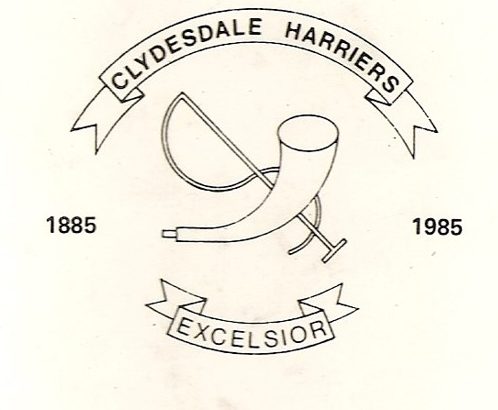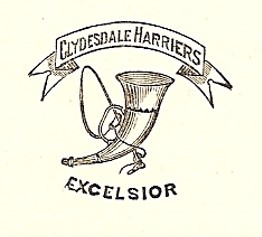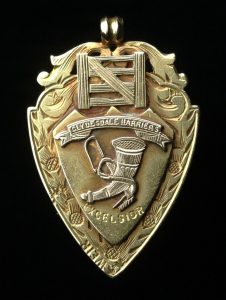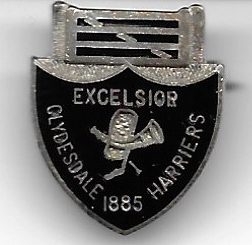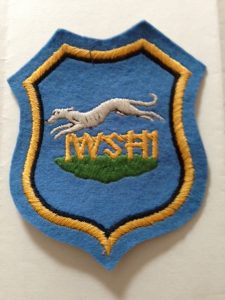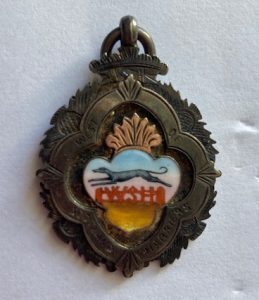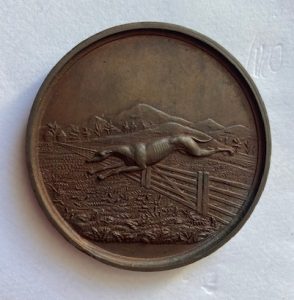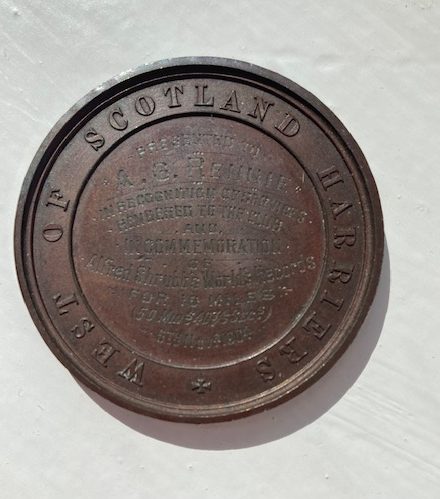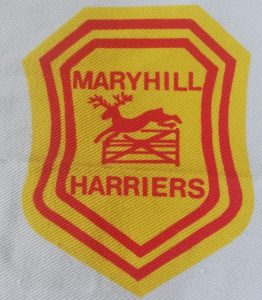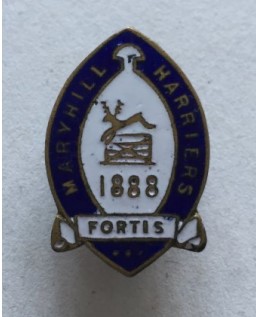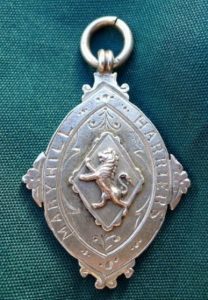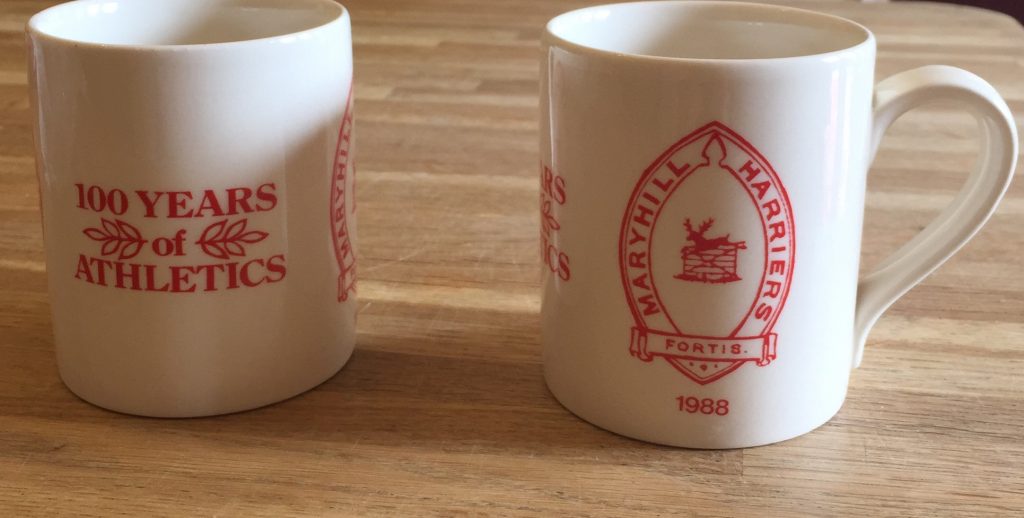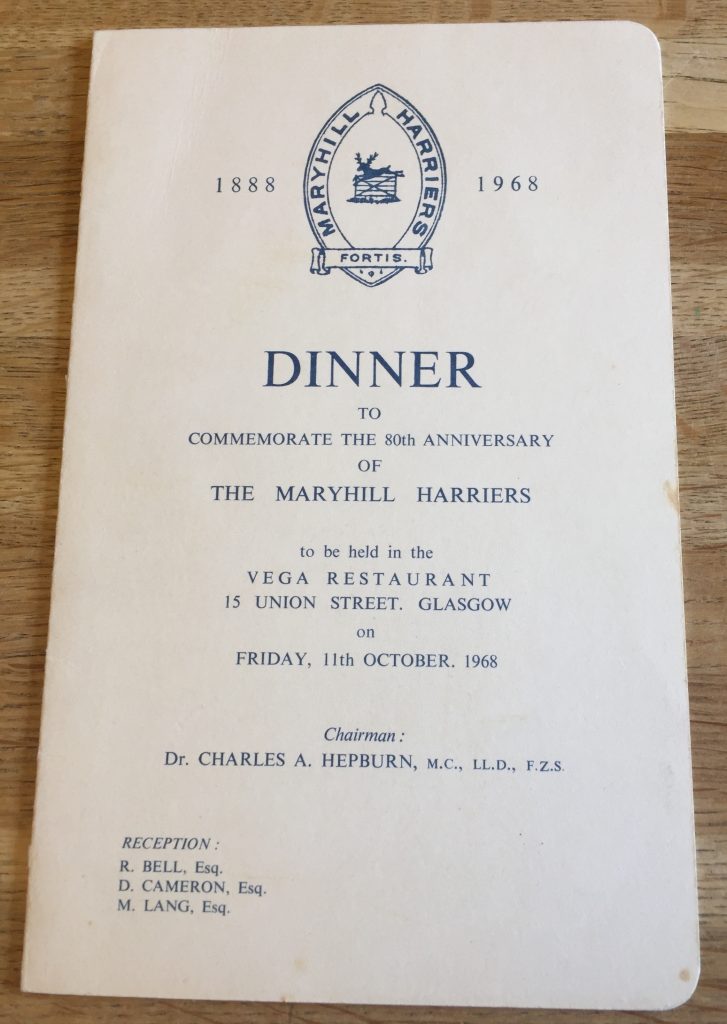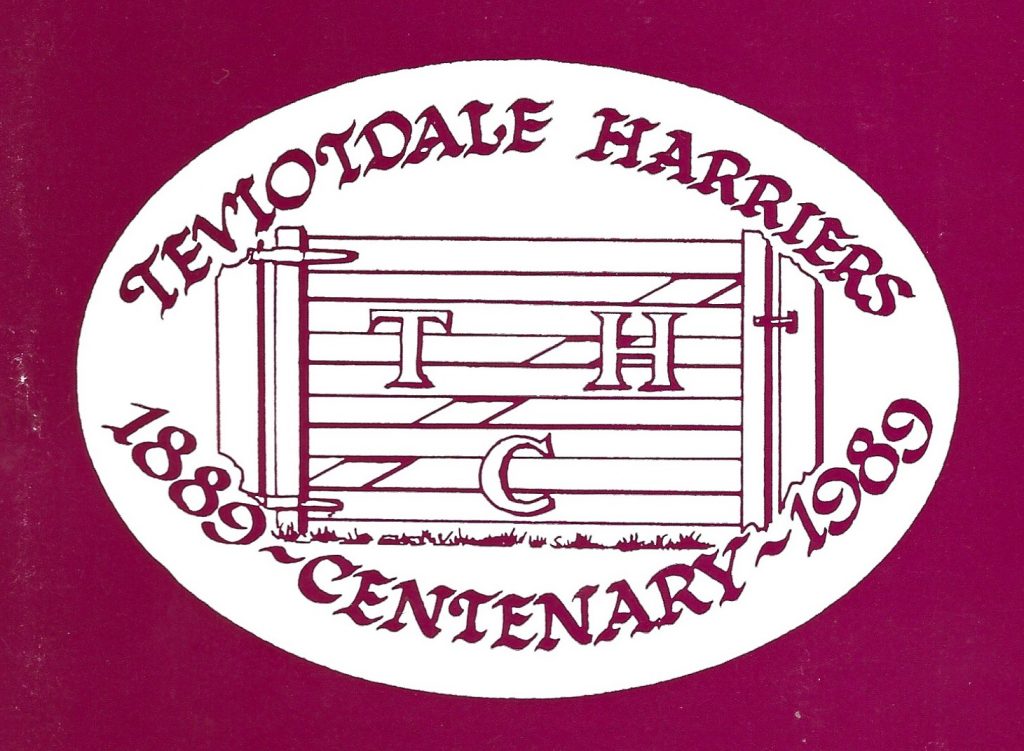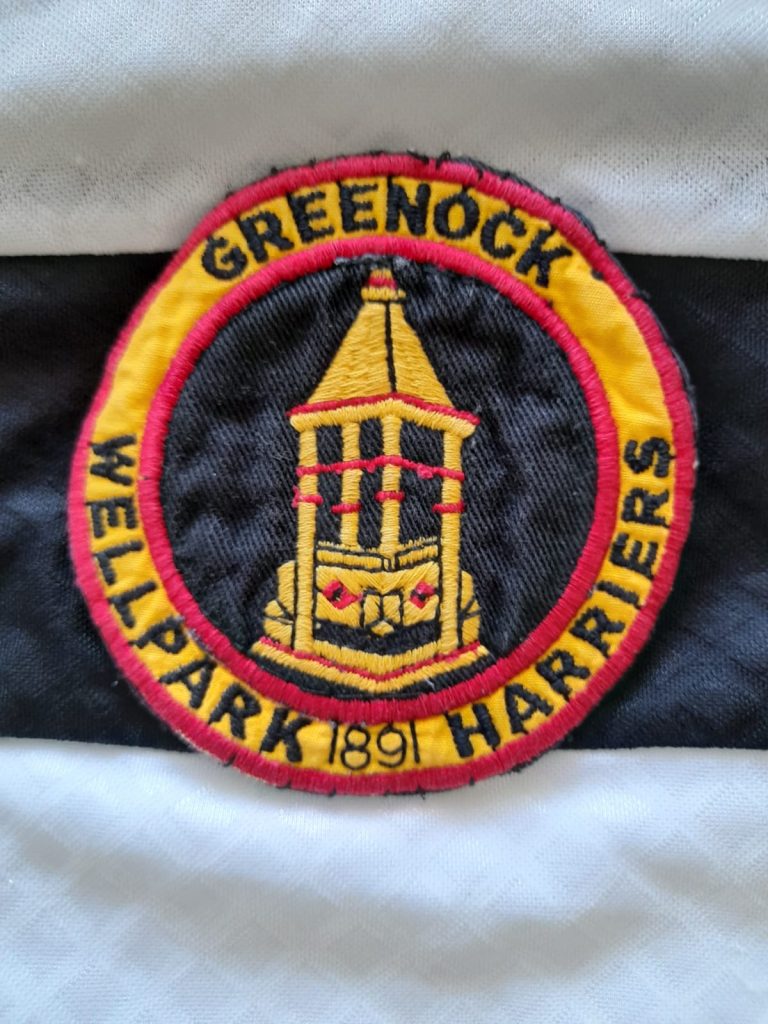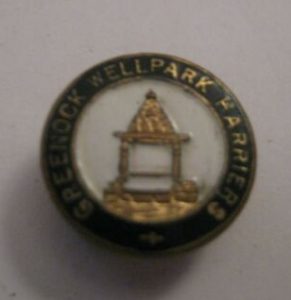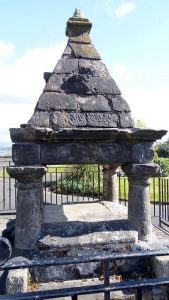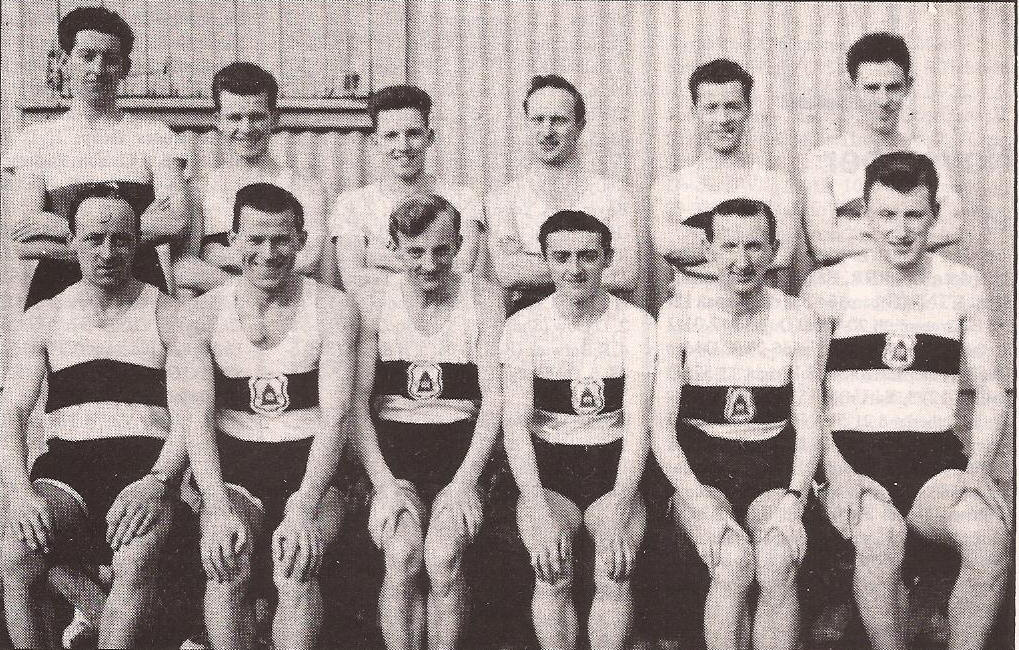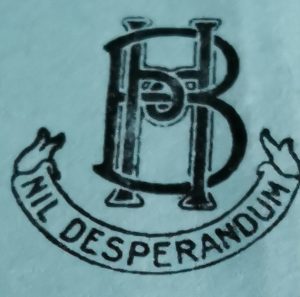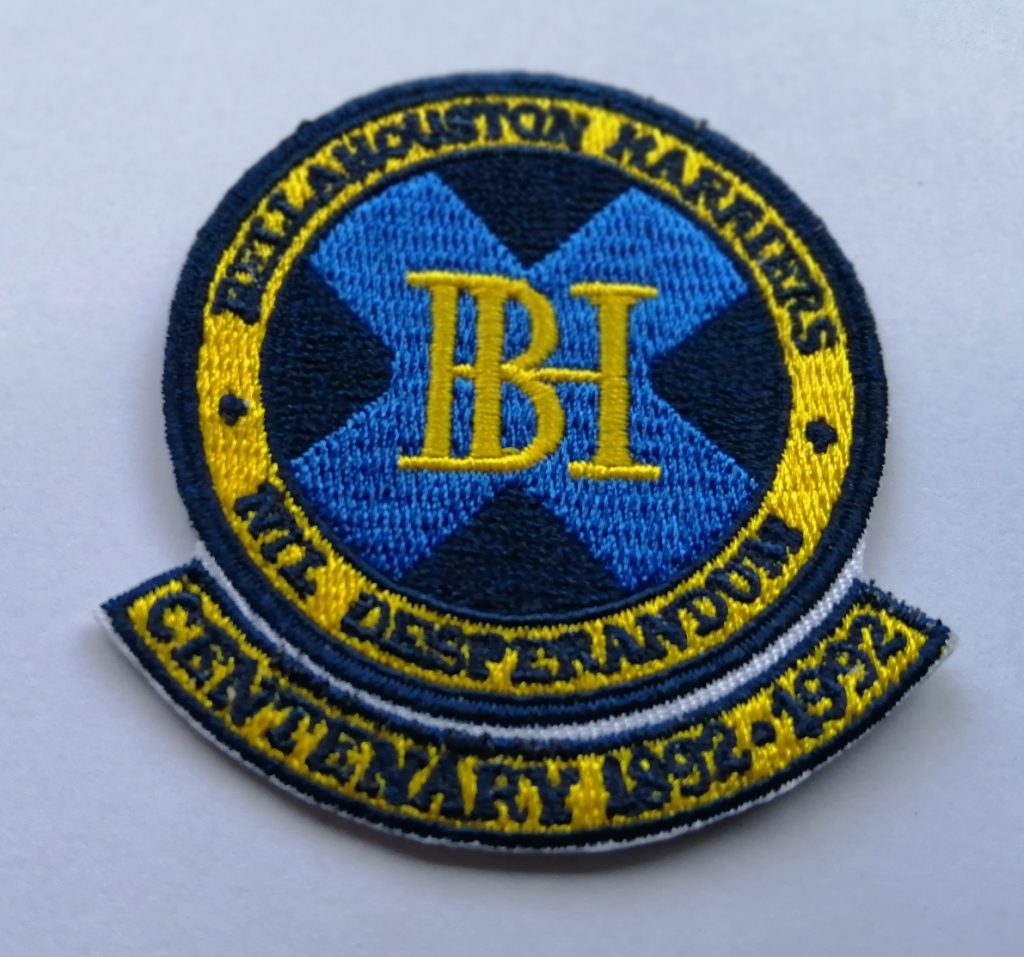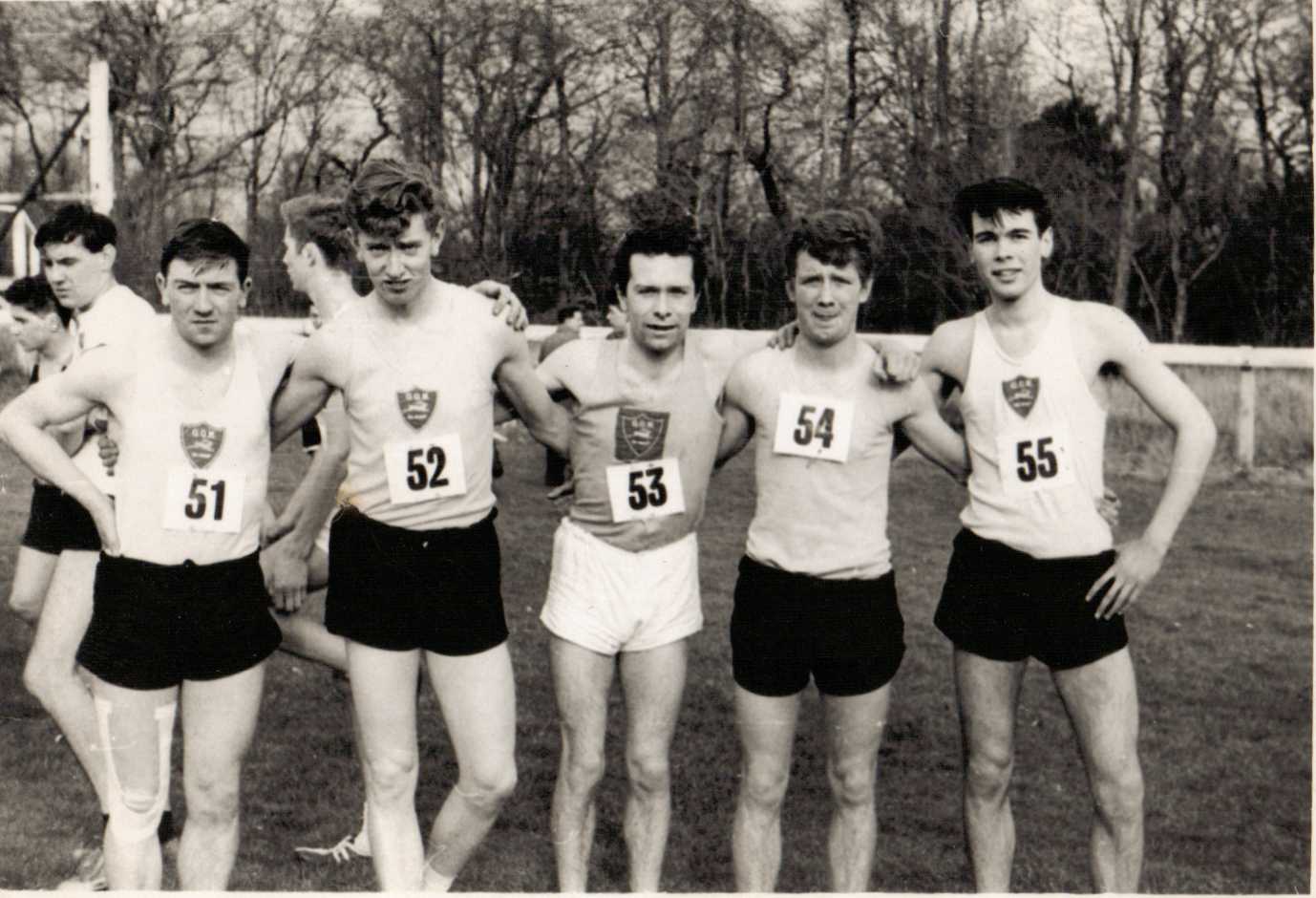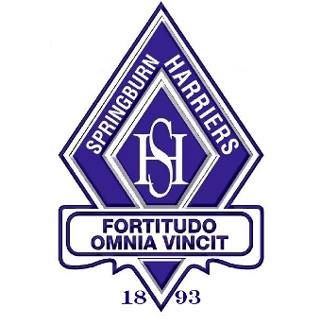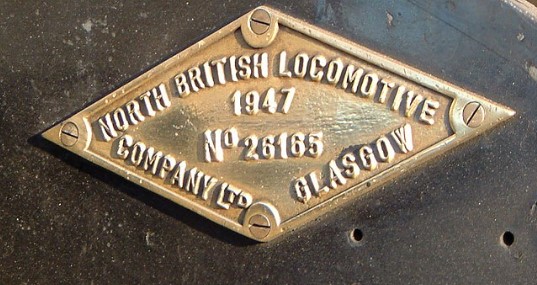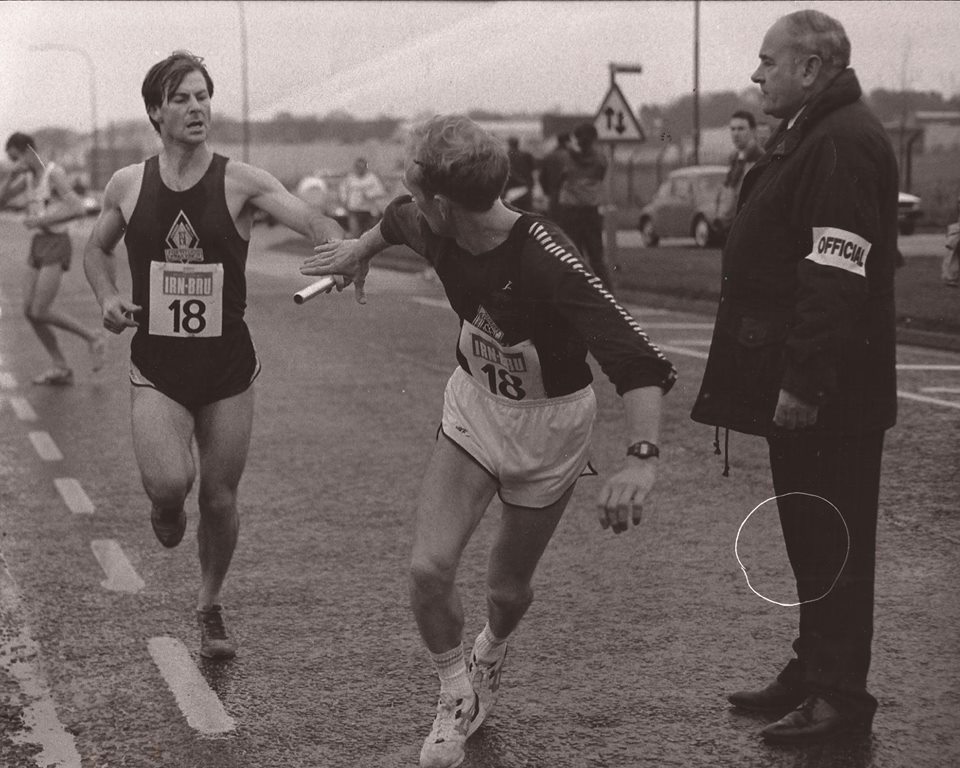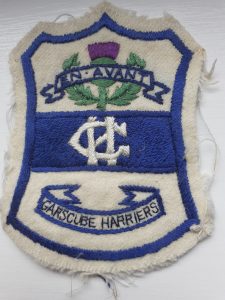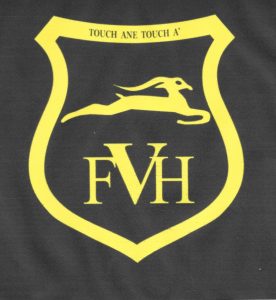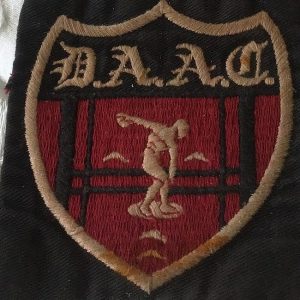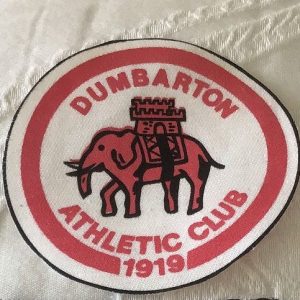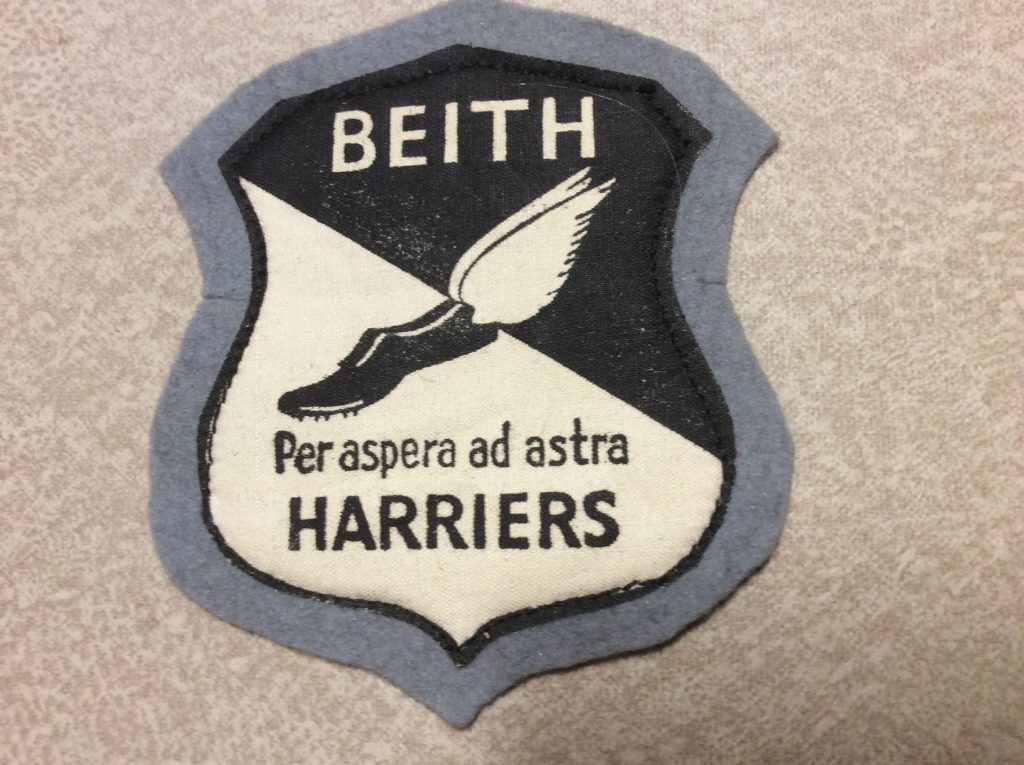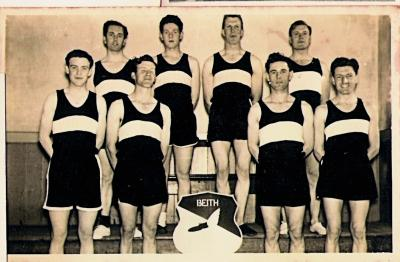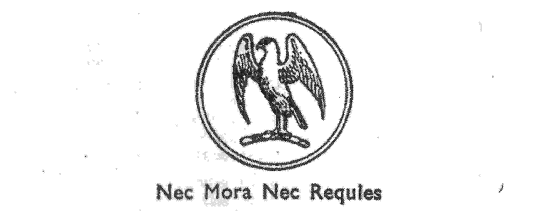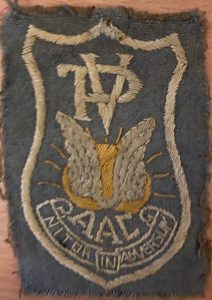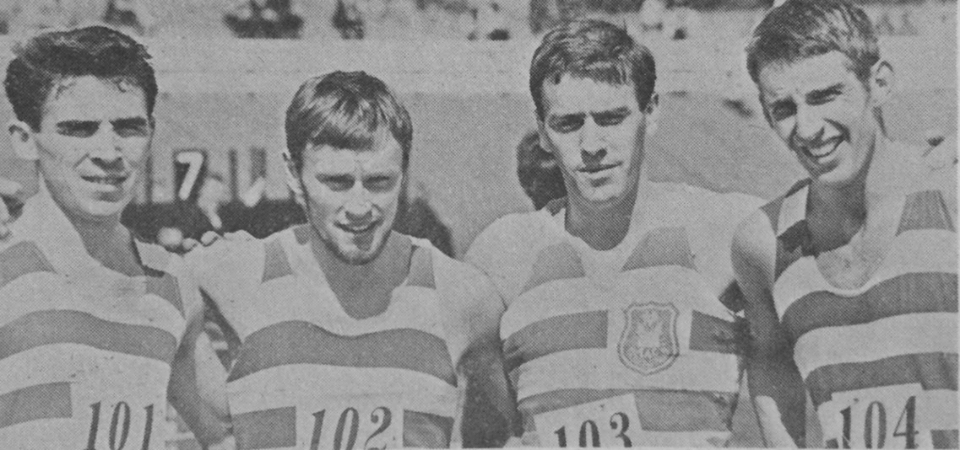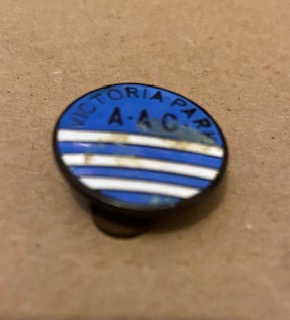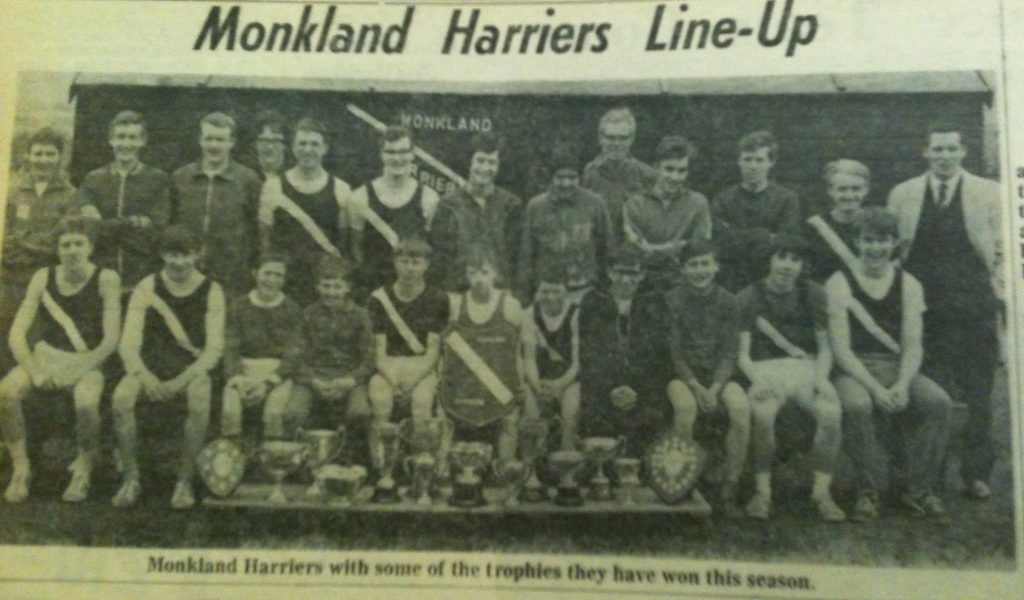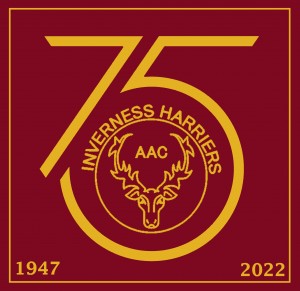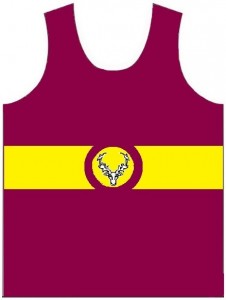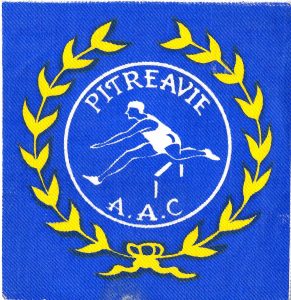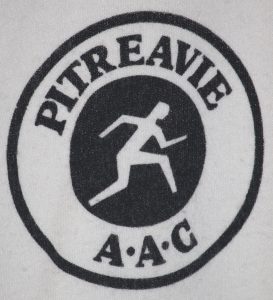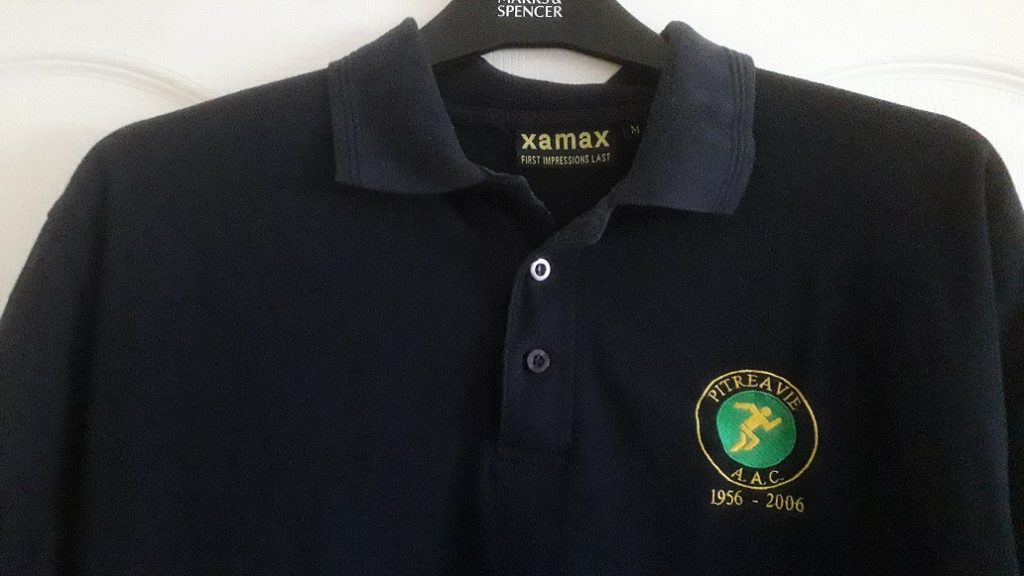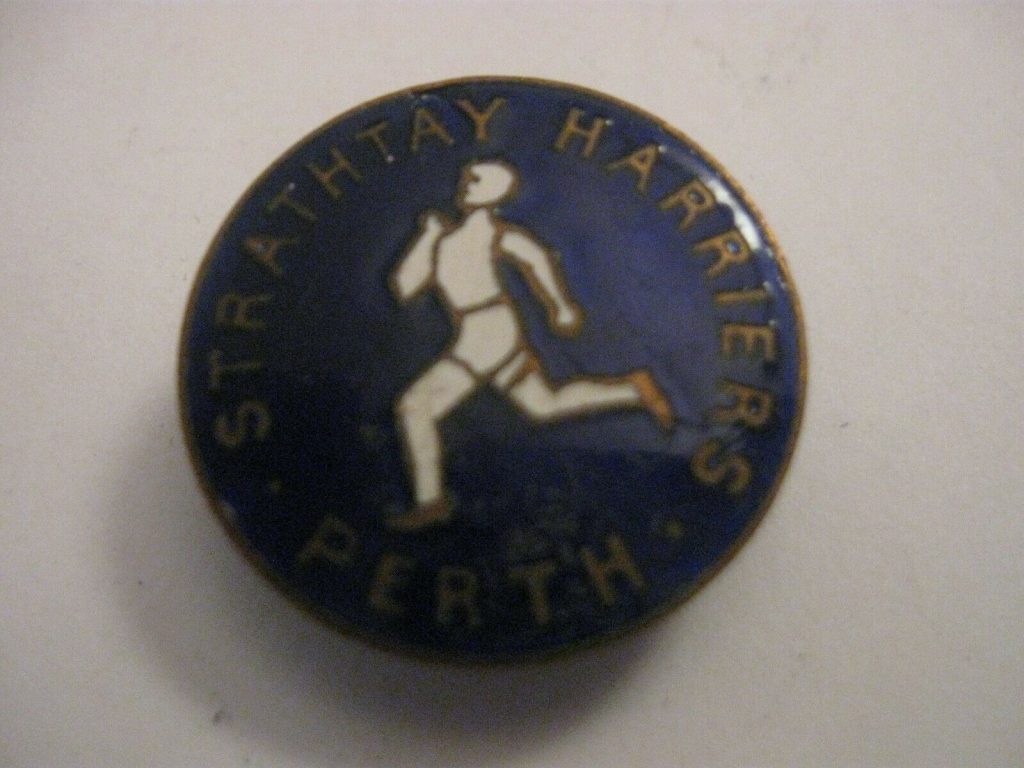It was originally the case that harrier and athletic clubs – like other clubs or societies had their own club crest and slogan or motto. This was for several reasons but all had to do with club identity, not only on the field of competition but in day to day living when club members showed solidarity each other and pride in the club by wearing the club tie or lapel pin. This is, maybe unfortunately, no longer true of the majority of clubs. We should however at least acknowledge the fact that they were used and are still used although not to quite the same extent. We will look at some of them here, noted in chronological order.
When I joined Clydesdale Harriers in April, 1957, I was given a blue club handbook and encouraged to buy a metal lapel badge. The badge had the club’s insignia of hunting horn and whip with the club name above and the motto ‘Excelsior’ (meaning ‘the best’) below – exactly as in the picture above but without the dates . The hunting horn and whip refer back to the origins of the harrier clubs.
Q: Why was a cross-country runner called a Harrier?
A: The Harrier was a small dog used by huntsmen to flush out the quarry
A quote:
“ The history of the word dates back to the 1800s when British schoolboys started playing a game called “hares and hounds.” Like hide and seek, the hares would leave from a common spot before the hounds chased in pursuit. Outside of the schoolyard game, the type of hound that was bred to chase hares is called a “harrier.” These dogs are incredibly skilled in chasing and hunting–much like a runner in pursuit of the competition in a race..”
Clydesdale Harriers was the first Scottish open athletic and harrier club in Scotland and was largely modelled on the gentleman’s clubs prevalent at the time. The clubs that followed also had their crest (‘logo’ in newspeak) and a Latin tag. These tags usually had to do with courage, or hard work, or similar manly attribute. Whether the club was born before 1914 or after 1945 the club badge was important to the members. But to begin at the beginning –
The representation above comes from the club handbook of 1890-91. Name at the top, hunting horn and whip which were harking back to the origins of the harrier movement and the club motto of ‘Excelsior’ which is |Latin for ‘the best’. There is no date because the club was first open club. The badge was on the left breast of the club top (like the modern T shirt) and the cross-country runners and teams had a five-barred gate on the back. As the Rules in the club handbook state:
Club championship medals were of gold, silver and bronze and in addition gold medals were awarded by the club to any athlete setting a Scottish record. The one below was to John Blane for setting a Scottish mile record.
When the club lapel badge was produced, it had the shield with crest and motto with the addition of the gate at the top. Modelled on the gentleman’s club of the day, the harriers had a constitution which followed the pattern set by them Other clubs followed the example set in various ways.
We’ve no picture of it, but the Edinburgh Harriers crest was a simple, red, five barred gate on the front of a dark blue vest but there was, to our knowledge, no motto at all.
West of Scotland Harriers, formed in 1886, had a series of vests/singlets as follows:
- 1886 – Chocolate with blue dog on back and gold dog on front;
- then in 1887 – Black with pale blue trim, Sky Blue and Black Harrier, with dog and a five bar gate.
- Subsequently changed again to sky blue vest with black band and dog over a five bar gate centre front.
The crest below was the last one described above and depicts the hunting hound clearing a fence at speed and the struts on the fence happened to spell out the letters W, S and H in gold lettering.
The crest of dog and fence appeared on race awards too:-
eg Tom Cruden’s medal for being 2nd in the club championships
Medal given by the club to AG Rennie to commemorate Shrubb’s world records 1904 at Ibrox. It is engraved reverse side (below). Rennie was chief timekeeper. It’s printed a bit larger so that the inscription can be read.
Gates were generally popular and also appeared on
- the Perthshire Harriers vest of 1887 in white on a blue background, and
- in the same year Dunfermline Harriers had a blue gate on a white vest, and
- Kirriemuir Harriers had a white gate on a maroon vest and
- Ayr Harriers, 1888, had a three barred hurdle with the slogan “Gang Forrit” on it.
GANG FORRIT
Maryhill Harriers appeared on the scene in 1888.
The Maryhill Harriers vest was blue with the yellow badge above showing a deer leaping over a five-barred-gate. The club motto was Fortis, again the Latin tag, meaning ‘Strong’. Note the presence of the motto on the lapel pin below which dates from the 1930’s-50’s.
Craig Perrie at Maryhill has an excellent page on the Maryhill Harriers insignia and its development on the club website and we urge you to read it at
Club-Crest-History-and-Evolution-latest-Apr-2022-blue-banner.pdf (maryhillharriers.com)
“It is believed that the original crests were embroidered directly onto vests. The original vest badge colour scheme was a yellow background with red stitching. Later versions were screen printed onto a sheet to then be cut-out and sewn onto vests. The vest badge crest design and colour scheme remained largely unchanged from its inception until the mid-1990s. The badge/crest position was (and still is) always positioned over the left breast on a Royal blue coloured vest.”
The club crest was held in great esteem by the club and club members and appeared on the running vest, on stationery, on lapel badges, blazer badges and also on race medals. The one below dates from 1897 and is from Maryhill Harriers. The reverse is on the next page. Note the lion rampant but not deer or fence.
Club insignia was shown on a wide variety of objects, not just badges. Including programmes, menus and order of proceedings.
Fortis
The sport was spreading all over the country and in 1889 Teviotdale Harriers was formed with the white vest and broad maroon band as their racing outfit. The club history tells us that in 1896 – It was in this year that a GATE was adopted for club stationery, with the paper to have maroon lettering. The Teviotdale gate looks like this –
The Teviotdale Harriers Gate – taken from the cover of their centenary history.
Greenock Wellpark Harriers were established in 1891 and their white vest with broad black band had the club crest in the middle: a simple roundel with the image of the Well from Wellpark in Greenock and the club name round the inside of the circle. Initially in blue, the crest was later changed to gold. As with several other clubs, they had a metal lapel badge which is shown below.
The actual well in the park is still there as the photograph below indicates.
The club eventually merged with Spango Valley to become Inverclyde AAC but to that time the badge with the well was worn with pride by many really top class athletes. Note the crest on the vest of the great Wellpark team on the 1950’s and early 60’s including the Stevenson brothers, George King and Bill Stoddart.
The pattern emerging is club name, club motto and club crest, but Bellahouston Harriers changed the pattern a bit.
The club vest was dark blue with a light blue cross of St Andrew. The badge was a simple circle with the club initials entwined in the centre and the motto Nil Desperandum. Founded in 1892 they had every reason to have the date of inception included but chose not to. The meaning of the Latin motto was ‘Never despair’ or ‘never give up’. Incidentally, the Irish club Clonliffe Harriers has the same slogan.
Nil Desperandum
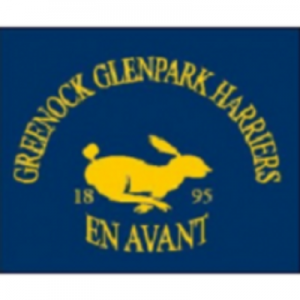 In 1895 the Clydesdale Harriers Greenock Section became an independent club in their own right and chose the name of Greenock Glenpark Harriers and broke the Latin stranglehold on mottos when the decided on a speeding hare with the motto in French en avent. Worn and easily seen on team members in the following photograph.
In 1895 the Clydesdale Harriers Greenock Section became an independent club in their own right and chose the name of Greenock Glenpark Harriers and broke the Latin stranglehold on mottos when the decided on a speeding hare with the motto in French en avent. Worn and easily seen on team members in the following photograph.
En Avant
Springburn Harriers brought their own neighbourhood into it.
The Springburn badge as shown above is front, top, centre of the vest, the diamond represents the North British Loco Works that was the main employer in the area when the club was founded. The year of the club’s birth is there and the Latin motto means ‘Bravery Overcomes All Things’.
But why the diamond? The club website tells us that the badge and crest (above) was taken from the railway locomotive factories based in the area, and their motto means ‘courage conquers all’. Ian Young tells us that “the Diamond on the Springburn vest is a copy of the trademark of the North British Locomotive Company in Springburn which was owned by Sir Hugh Reid” . Reid was the first chairman of the North British Locomotive Works – the largest builder of steam locomotives anywhere in the world. From its headquarters in Springburn over 18,000 locomotives were exported to all points of the compass. The diamond therefore has a real significance for the area and for the country. The diamond on the club vest is however turned through 90 degrees from the firm crest, see below.
Note the vests worn by Jim Cooper and Alex McIndoe in the Edinburgh to Glasgow Relay below.
Fortitudo Omnia Vincit
Garscube Harriers appeared on the scene in 1898 and there were several interesting features attached to it. The shield had a thistle in the top third, the club’s initialls in the middle and the club name below. The motto was in French and not in Latin – en avant means one of two things – Forward or In Front, and certainly the club was successful from the very first. It was placed right at the top of the shield and across the thistle.
En avant
THE VEST IS THE CREST
In many clubs, certainly the great preponderance of more modern clubs, ‘the vest is the crest’; in other words there is no club insignia other than what is worn on race day, and there is no motto, slogan or even battle cry which helps the club identity. Some of these from other 19th century vests and crests are noted here. I particularly like the footwear for the Scottish Pelicans
Swift Harriers (Aberdeen) 1889 – White with dark blue star
Thistle Harriers (Dundee) 1890 – Blue Cap with thistle, white semmit with blue borders, blue and white belt, white knickers, royal blue socks. Emblem – Thistle
If we come forward into the 20th century, Falkirk Victoria Harriers were founded in August 1901 and their crest deviated from thits predecessors in having a good Scots slogan.
Touch Ane, Touch A’
Shettleston Harriers club was founded in 1904 and the original club uniform was a white singlet and white shorts. It was two years before they switched to the now well-known blue and gold. Their club badge favoured a torch.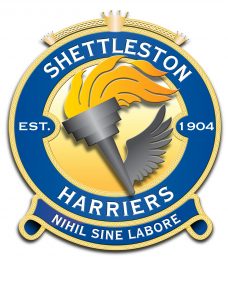
All the traditional features were there. The club name of course, the date of establishment and the motto in Latin meaning ‘Nothing without Work’
Nihil Sine Labore
Dumbarton Amateur Athletic Club was formed in 1919 and the club colours were of black with a broad red band. The actual badge decided upon was a bit more complicated than most. Described by Alistair Lawson below and then shown in a photograph from Allan Adams:
“”The shield motif on the DAAC tie is made up as follows:-
– Across the top, in gothic-style letters, is D.A.A.C. in white, on a
dark blue background.
– In the centre, an athlete in discus-throwing pose, arm back,
starting the wind-up.
– The background is red, with what look like rugby goalposts, i.e. a
large H shape, double-lined.”
There was no motto or slogan attached to it.
Beith Harriers were founded in 1923 in Ayrshire and their badge is an interesting one. It has the winged foot logo favoured by many athletics among them many more modern clubs. eg The New York Athletic Club adopted the ‘winged foot of Mercury’ in 1876. Club colours being black and white the club adopted a shield diagonally divided into black and white sections with the winged foot and the club slogan of ‘per aspera ad astra’ which is another Latin phrase meaning ‘through hardship to the stars’. The club’s name was top and bottom of the shield. This logo appeared on vests, lapel pins and track suits.
Per Aspera Ad Astra
Dundee Hawkhill Harriers were founded in November, 1924, and the badge of a hawk above comes from a booklet on the club’s activities published in 1945 by A Mudie. The slogan or motto means “Neither Tarry Nor Rest” – a good one for a harrier!
Victoria Park AAC was formed seven years after Beith Harriers, in 1930, and had an interesting variation in mottoes. The club crest was a shield with the club’s initials entwined at the top above wings in front of a golden rising sun. The club slogan is encapsulated at the bottom and reads Nitor in Adversum. Latin again, meaning ‘ I strive against opposition’. The badge can be worn on track suit or on the competition vest. The club vest was well-known in its own right and not all athletes had the badge sewn on – eg only one in the photograph below.
Victoria Park AAC was another club known immediately by their vest – the blue and white hoops were recognised everywhere. They had their badge, they had their Latin motto, but the blue and white hoops were one of the most recognised – and respected – outfits in the country. It is not surprising therefor that their lapel badge was simply the club name and blue and white stripes.
Nitor in Adversum
Monkland Harriers were, like Greenock Glenpark Harriers, an offshoot of Clydesdale Harriers and many top class athletes (such as Olympian Sam Stevenson) were from the area. Like other clubs from the 1930’s their crest was their vest’. In other words, the only unique identifier was the competition vest. Note the club shield in the picture below. The boy in the centre of the front row is holding it.
As after the 1914-18 war, many new clubs appeared on the scene after the 1939-45 hostilities. One of these was Inverness Harriers who were established in 1947 and celebrate their 75th anniversary in 2022. The current club logo is this one.
After the 1939-45 War several clubs sprung up across the country and Inverness Harriers was one of the most successful of these. Their vest has undergone several changes since their first appearance in 1947 but two things have remained constant – club colours (maroon and gold) and the club crest.
The vest was originally maroon with a gold band and the stag’s head in the centre, as in the illustration below. The suggestion on the club website is that the choice of the stag’s head is because one of the club’s founders was Tom McKenzie and the clan McKenzie crest is just that – a stag’s head.
Another of the post-war clubs is the very successful Pitreavie AAC Their original crest from the club’s inception in 1956 was blue with the Olympic style laurel round the athlete. At that time the club vest was royal blue. The badge was changed when the club colours were changed.
The club logo at present is a simple double roundel with the club name and a stylised sprinter in the centre.
They celebrated their 50th anniversary in 2006 and the club produced a good quality polo shirt. It was designed as a one off for the 50th and all Club members purchased their own. They were given to visiting Officials who came to officiate at the Inter Club meeting which was held to replicate the type of meetings which were held when the club was formed.
Perth Strathtay have been a part of Scottish athletics since the 1940’s and they too have simple roundel badge
The lack of a classical education which enabled a primary school janitor to come up with a latin motto for the club vest is a good reason for not having the motto in that language, but Greenock Glenpark Harriers had the French ‘en avant’ as their slogan. But why not have a Scottish rallying cry? Something from Burns (Now’s the Day and Now’s the Hour’) , John McLaren’s (Guid Aul’ Scotland’), Kirkintilloch’s ‘Ca Canny but Ca awa” or there is a whole back catalogue of clan slogans eg Latio, French, Gaelic and English are all available: Some examples
Anderson Stand Sure Armstrong Invictus maneo / I remain unvanquished Johnstone Nunquam non paratus / Never unprepared MacDougall Buaidh no bas / To conquer or die MacNeil To Conquer Or Die Lindsay Endure fort / Endure with strength
